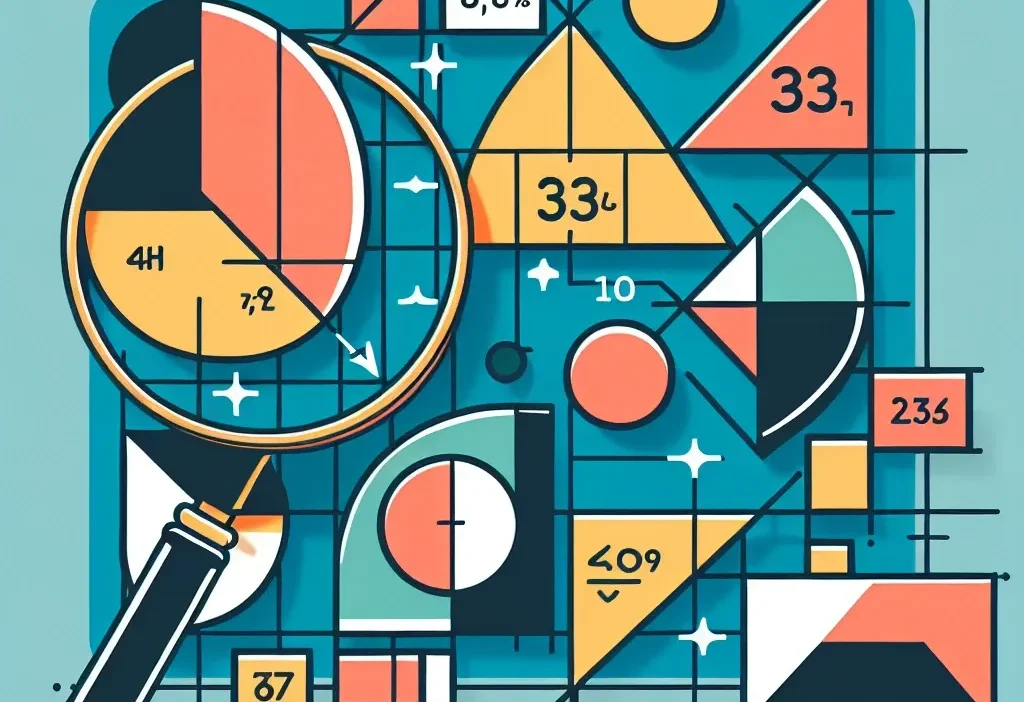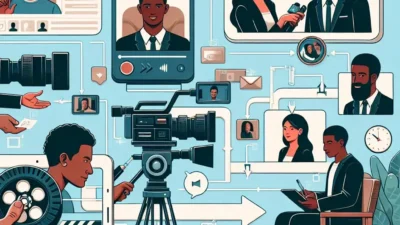Understanding the Fundamentals of Aspect Ratio
In the realm of visual media, few concepts are as fundamental yet often overlooked as aspect ratio. This mathematical relationship between width and height shapes every image, video, and screen we encounter daily, influencing our visual experience in ways we rarely consider. Whether you’re a professional photographer, videographer, web designer, or simply someone curious about the technical aspects of visual media, understanding aspect ratio is crucial for creating compelling content and making informed decisions about display technologies.
At its core, aspect ratio represents the proportional relationship between the width and height of a rectangular image or screen. Expressed as a ratio such as 16:9 or 4:3, these numbers tell us how many units wide an image is for every unit of height. This seemingly simple concept carries profound implications for composition, storytelling, technical compatibility, and user experience across various media platforms.
The Mathematical Foundation Behind Aspect Ratios
To truly grasp aspect ratios, we must examine their mathematical foundation. When we say an image has a 16:9 aspect ratio, we mean that for every 16 units of width, there are 9 units of height. This ratio remains constant regardless of the actual size – whether we’re talking about a smartphone screen or a cinema display. The mathematical relationship can be calculated by dividing width by height, giving us a decimal value that represents the same proportional relationship.
Consider the evolution of aspect ratios throughout history. Early television broadcasts used a 4:3 ratio, creating a nearly square viewing experience that seemed natural and balanced. This format dominated for decades until the introduction of widescreen formats revolutionized visual storytelling. The transition to 16:9 wasn’t arbitrary – it represented a calculated decision to better accommodate human peripheral vision and create more cinematic experiences in home entertainment.
Common Aspect Ratios and Their Applications
Different industries and applications have gravitated toward specific aspect ratios for practical and aesthetic reasons. The 1:1 square format, popularized by Instagram, creates a sense of balance and equality that works particularly well for social media content. Its democratic nature ensures that content appears consistently across various devices and platforms.
The 3:2 ratio, traditionally used in 35mm photography, offers a slight rectangular format that many photographers consider ideal for portraiture and landscape work. This ratio provides enough horizontal space for composition while maintaining a natural, pleasing proportion that doesn’t feel overly stretched or compressed.
Cinema has embraced even wider formats, with 21:9 becoming increasingly popular for its dramatic, panoramic effect. This ultra-wide format allows filmmakers to capture sweeping landscapes and create immersive experiences that draw viewers into the narrative space. However, these wider formats can present challenges when content is viewed on standard displays, often requiring letterboxing or cropping that may compromise the original artistic vision.
Technical Implications in Digital Media
In our increasingly digital world, aspect ratio considerations extend far beyond artistic preference into technical necessity. Web developers and designers must carefully consider how content will display across the vast array of devices and screen sizes that users employ. A website optimized for desktop viewing may appear cramped or poorly formatted on mobile devices with different aspect ratios, potentially driving away users and negatively impacting search engine rankings.
Video content creators face particularly complex challenges when dealing with multiple aspect ratios. A video produced in 16:9 for YouTube may need to be reformatted for Instagram’s 1:1 or 9:16 vertical formats, requiring careful consideration of composition and potentially losing important visual information in the process. This multi-platform reality has led many content creators to adopt a “safe zone” approach, composing their shots with multiple aspect ratios in mind from the outset.
The rise of mobile-first consumption has dramatically shifted aspect ratio preferences. Vertical video, once considered amateurish, has become the dominant format for platforms like TikTok, Instagram Stories, and Snapchat. This shift reflects changing viewing habits and the intimate, personal nature of mobile device usage.
Impact on User Experience and Engagement
Research in visual psychology demonstrates that aspect ratios significantly influence how viewers perceive and interact with content. Wider aspect ratios tend to create a sense of expansiveness and cinematic quality, while narrower or square formats can feel more intimate and immediate. These psychological effects aren’t merely academic – they translate directly into engagement metrics and user behavior.
E-commerce websites have discovered that product images with consistent aspect ratios create a more professional appearance and improve user trust. Inconsistent image proportions can make a website appear unprofessional or hastily constructed, potentially impacting conversion rates and brand perception.
Social media algorithms also factor aspect ratio into content distribution decisions. Platforms optimize for content that fits naturally within their interface design, meaning that posts using appropriate aspect ratios are more likely to receive favorable algorithmic treatment and broader reach.
Creative and Artistic Considerations
Beyond technical requirements, aspect ratio serves as a powerful creative tool that influences storytelling and emotional impact. Directors like Stanley Kubrick were famous for their meticulous attention to aspect ratio selection, understanding that the frame’s proportions could enhance narrative themes and visual metaphors.
Portrait photography benefits from taller aspect ratios that emphasize the subject’s verticality and create a sense of elegance or authority. Landscape photography traditionally favors wider formats that can capture the breadth and majesty of natural scenes. However, creative photographers often deliberately subvert these conventions to create unexpected visual impact and challenge viewer expectations.
The choice of aspect ratio can also reflect cultural and historical contexts. The Academy ratio of 1.37:1, used in early Hollywood films, creates a more intimate, theatrical feeling that connects to the medium’s stage origins. Modern ultra-wide formats reflect our contemporary preference for immersive, spectacular entertainment that overwhelms the senses.
Future Trends and Emerging Technologies
As display technologies continue to evolve, new aspect ratio considerations emerge. Foldable smartphones introduce dynamic aspect ratios that can change based on how the device is configured. Virtual and augmented reality environments challenge traditional rectangular thinking entirely, moving toward spherical and three-dimensional content formats.
The increasing prevalence of multi-monitor setups in professional environments has created demand for ultra-wide content that can span multiple displays effectively. This trend influences everything from video game design to financial trading software, where horizontal screen real estate provides tangible productivity benefits.
Artificial intelligence and machine learning are beginning to play roles in automatic aspect ratio optimization, with algorithms that can intelligently crop and reformat content for different platforms while preserving important visual elements. These technologies promise to reduce the manual work required for multi-platform content distribution while maintaining creative integrity.
Practical Guidelines for Aspect Ratio Selection
When choosing aspect ratios for specific projects, several factors should guide decision-making. Consider the primary distribution platform and viewing context – content intended for mobile consumption should prioritize vertical or square formats, while desktop or television content benefits from wider ratios.
Analyze your target audience’s viewing habits and preferences. Younger demographics increasingly favor vertical content consumption, while older audiences may prefer traditional horizontal formats. Understanding these preferences can inform strategic decisions about content format and distribution.
Technical constraints also play crucial roles. Budget limitations might restrict the ability to create multiple versions of content for different aspect ratios, making it important to choose a primary format that translates well across platforms with minimal modification.
Consider the longevity of your content. While current trends favor certain aspect ratios, choosing formats with broad compatibility ensures that content remains accessible and properly formatted as technologies and preferences evolve.
The Intersection of Aspect Ratio and Accessibility
Aspect ratio considerations extend into accessibility and inclusive design principles. Users with visual impairments may rely on screen magnification software that works more effectively with certain aspect ratios. Content creators should consider how their choices impact users with diverse needs and technological constraints.
Responsive design principles require careful attention to how content scales and reflows across different aspect ratios. A design that looks perfect on a 16:9 desktop monitor may become unusable on a narrow mobile screen if aspect ratio considerations aren’t properly implemented.
The democratization of content creation tools has made aspect ratio knowledge more important for amateur creators who may not have professional training but still want to produce high-quality, properly formatted content for their audiences.
Conclusion: Mastering the Art and Science of Visual Proportions
Aspect ratio represents the intersection of mathematics, technology, psychology, and artistry in visual media. Its influence extends from the most technical considerations of display compatibility to the highest levels of creative expression and storytelling. As visual content continues to dominate digital communication and entertainment, understanding aspect ratio becomes increasingly valuable for anyone working with images, videos, or digital design.
The future promises even more complex aspect ratio considerations as new technologies emerge and viewing habits continue to evolve. However, the fundamental principles – understanding your audience, considering technical constraints, and leveraging aspect ratio as a creative tool – will remain constant guides for creating effective, engaging visual content.
Whether you’re optimizing a website for search engines, creating content for social media, or producing professional video content, aspect ratio knowledge empowers you to make informed decisions that enhance both technical performance and creative impact. In our visually-driven digital landscape, this understanding isn’t just helpful – it’s essential for success.




